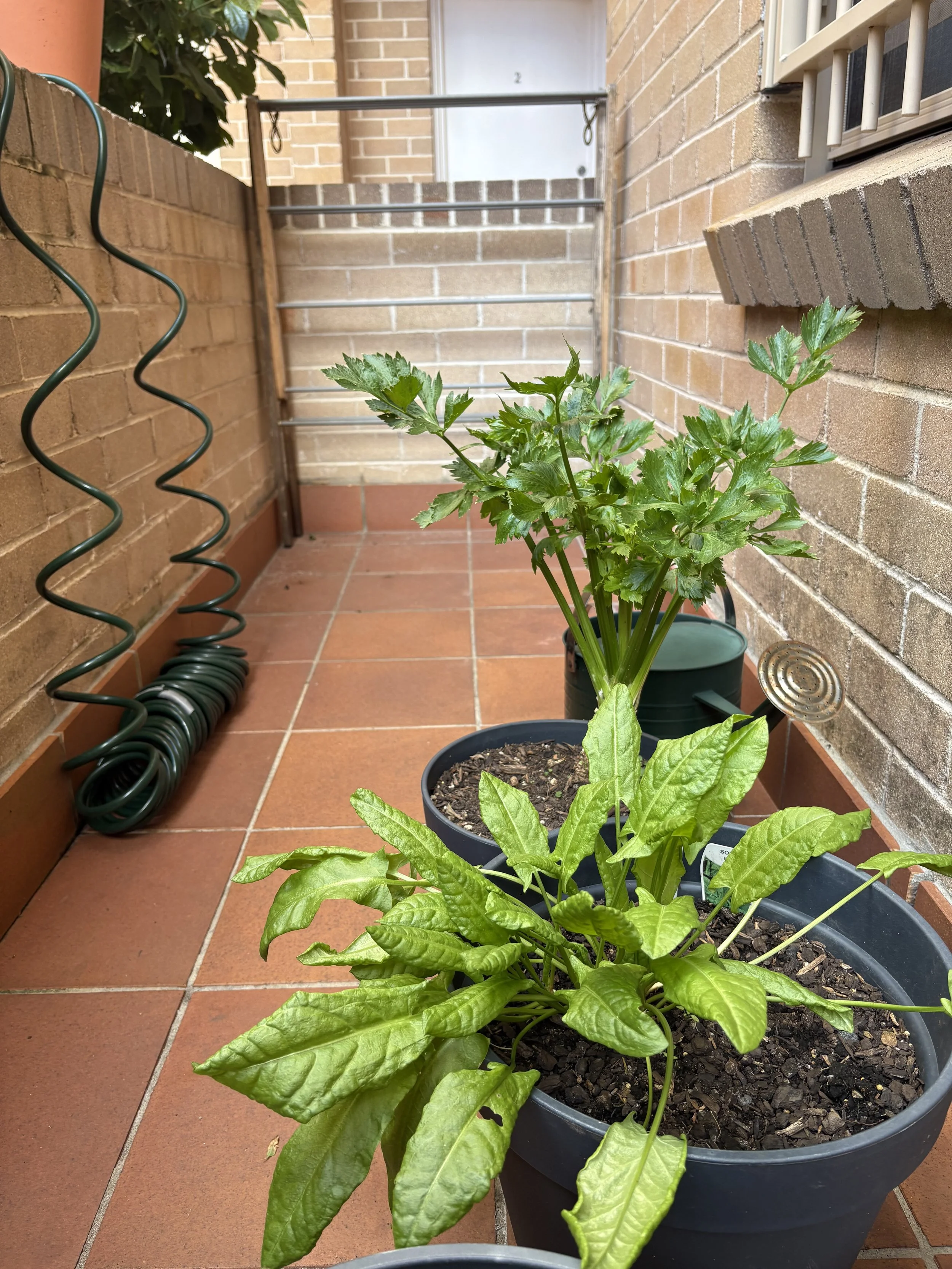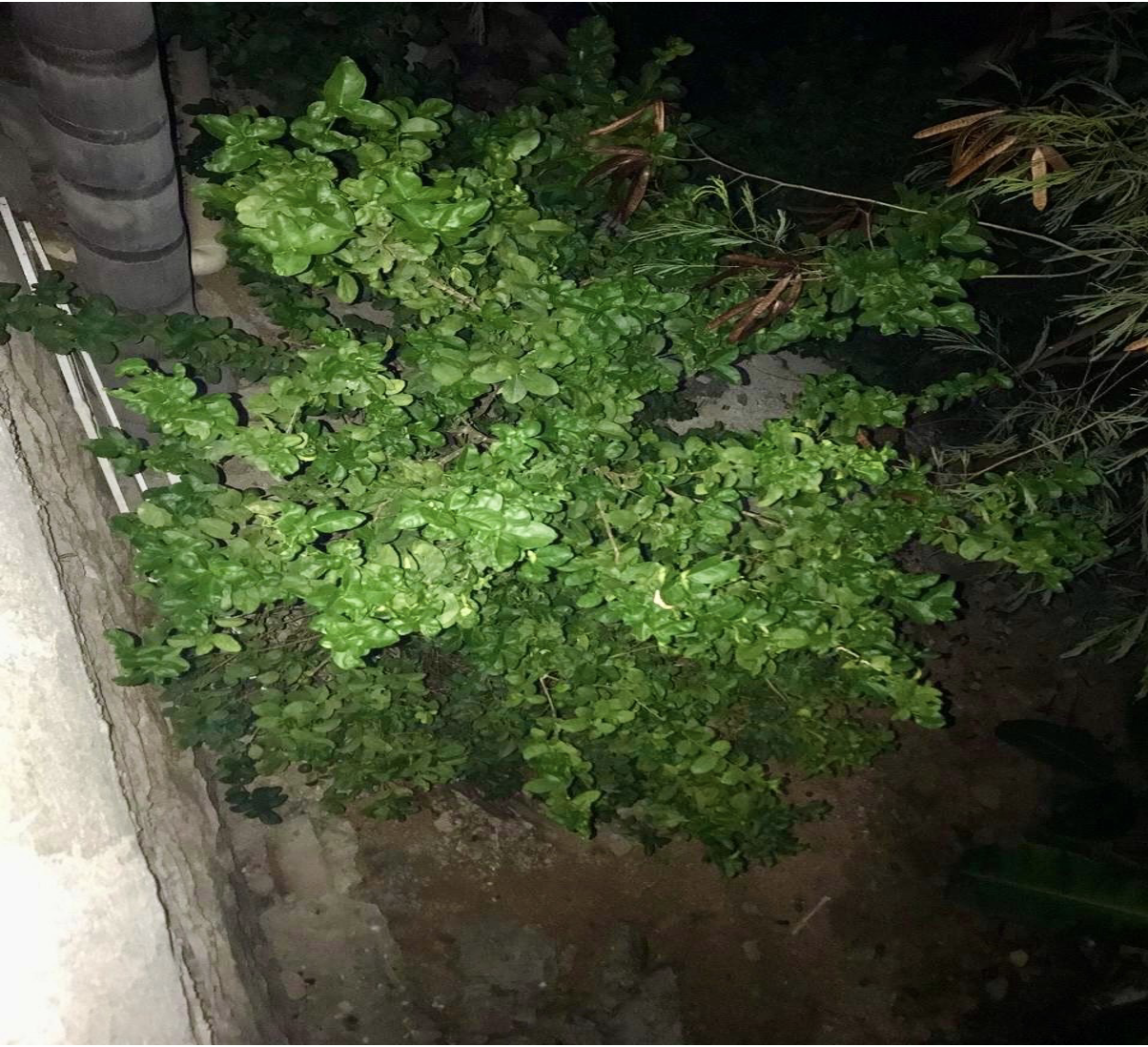Apartment garden’s magic
by
Rhyll McMaster
Here are some midwinter photos of my Chippendale kitchen garden that I started about two years ago. It’s outside my apartment.
Currently I’m growing a range of herbs (oregano, thyme, mint, Vietnamese mint, Italian parsley, the annual sweet basil as well as the perennial Thai basil, lemon grass and Mexican tarragon) and the spicy rhizomes, ginger, galangal and turmeric.
In summer, the sun gets there around early to mid morning and disappears behind the third floor and in winter there’s even less sun.
My pot ginger is just about ready to dig up for the first time. It loves to grow away from other root competition.
• Rhyll’s pot ginger
This year the nasturtiums have loved the rain and have trailed over anything they can get their tendrils on. The peppery leaves and flowers are great in a salad and in stir fries.
• The Nasturtiums
I’ve planted bok choi and broccoli from seed and the seedlings are slowly developing. I should be able to use the leaves soon.
• Bok choi and broccoli
*I have two types of chilli bushes – the red hot chillies and the medium-hot long chillies both of which are perennials. I never have to buy chillies in the shops (they’re really expensive).
• Chili bush
I grow a running pepper plant, a type of betel leaf, which is delicious wrapped round some meatballs and gently fried.
• Pepper plant
The most useful green leaf in my garden is the perennial French sorrel plant which has a lemony flavour and is good in salads and as a stir fry green.
• French sorrel plant
I have a celery plant in a pot – I pull off the outer leaves and use without disturbing the plant, so it’s cut-and-come-again like the Magic Pudding.
• Celery plant in a pot
My neighbour and I garden together, and he has successfully grown a passionfruit vine from seed, and has also grown sweet potato both for the root vegetable and the edible leaves.
• Rhyll’s neighbor’s passionfruit vine
I’ve planted chicory for the first time – it just keeps on through winter. It’s quite a bitter green, beloved of Italians who make a dish of braised chicory, garlic and white beans.
• Chicory plant
Two interns from universities in the US and who live in Japan and Mexico are working with Sustainable House and have read Rhyll’s post above and below they share brief comparisons with their home town experience
Ken
Back home in Yokohama, Japan, I help my mother out in the garden, where she grows a multitude of different herbs and vegetables.
We grow green onions in a pot throughout the year; since green onions are ubiquitous in Japanese and Asian cuisine, it’s handy to have them within arms reach. Green onions are surprisingly easy to grow and maintain as well. All you need to do is to cut the inedible root end and submerge it in water for a week, and let them back in the soil. Wild animals in the area like raccoons, civets, and crows dislike the taste of raw green onions, so you can leave them out without pest proofing the pot.
On top of that, we grow Shiso leaves, which go well with fish and salads. All that’s needed is a Shiso plant, and they’re durable even in the summer typhoon months. We also grew strawberries and tomatoes, but realized that it is too difficult to keep those plants free of pests (and pets) who see the ripened fruit as delicious treats.
• My dog getting into the tomato and basil plant pots, despite efforts to make it inaccessible by animals
While I’ve considered growing a few plants in my balcony in Champaign, Illinois where I go to college, I find that Illinois’ weather, especially its freezing winters, are too unpredictable for a garden novice like me.
Our garden in Yokohama is tiny compared to Rhyll’s kitchen garden, but we put in effort to grow fresh herbs and fruit. I find that the process of gardening can be quite meditative, as it requires a ton of patience and emotional control, whenever your hard work is ruined by weather or pests.
I really enjoyed reading through the catalogue of herbs, root vegetables, chilis, and peppers that Rhyll grows in her garden. A garden like that outside your kitchen would provide so many options when cooking and would lessen the amount of daily stress that comes from deciding what to eat for dinner, or having to run down to the grocery store.
Gabriel
Gabriel Rodríguez, a student from Mexico, here.
I’ve successfully grown chili peppers and tomatoes in my home garden. The chili plantation was particularly successful, with the first results appearing within two to three weeks. Tomatoes, on the other hand, took longer to grow but were still manageable. The climate proved to be a valuable ally, as it is mostly temperate throughout the year, with a rainy season from June to August. Access to specialized gardening soil and seeds purchased from a local supermarket contributed to the success of the garden. Interestingly, some of the plants were not grown from store-bought seeds, but rather from the remains of vegetables used in everyday cooking.
Kitchen gardening in Mexico is common among families living outside city centers.It’s not unusual to see people growing some of their own vegetables in home gardens and taking care of them regularly. These homegrown vegetables often include tomatoes, chili peppers, and herbs like cilantro or mint.However, these small plantations may vary depending on the local climate, even within the same city or region. Families living in cooler areas tend to grow vegetables or herbs that are more adapted to lower temperatures, avoiding those that require warmer conditions.
Here are some night time images of my family garden; the family live in warmer areas than Mexico City.
• Gabriel’s lemon tree (viewed from above)
• Gabriel’s lemon tea












